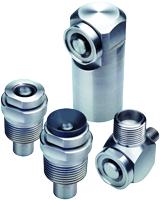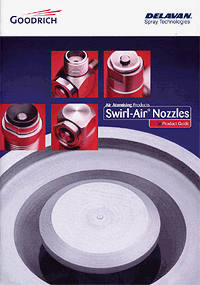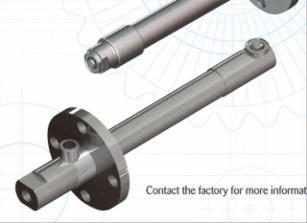Gaskühlung
Gaskonditionierung
SwirlAir® Zweistoffdüsen gewährleisten eine energieeffiziente Gaskühlung und Gaskonditionierung Einspeisungskühlung ,Entstickung ,Einspritzen von Chemikalien, Entschwefelung
Anwendungsbeispiele für unsere SwirlAir® Zweistoffdüsen:
- Gaskühlung und Gaskonditionierung
- Gaskühlung vor der Schlauchfilteranlage,
- Gaskühlung vor dem elektrostatischen Abscheider,
- Gaskühlung Wärmetauscher,
- Gaskühlung in Öfen
- Kühltürme
- Einspeisungskühlung
- Entstickung
- Entschwefelung
SwirlAir® Zweistoffdüsen / Düsen bieten vielfältige Einsatzmöglichkeiten in folgenden Branchen:
- Aluminium
- Zement
- Chemie
- Kalk
- Petrochemie
- Energieerzeugung
- Zellstoff und Papier
- Raffinerien
- Stahl
- Müllverbrennung
 |  |  Düsenlanzen nach Kundenanforderung Düsenlanzen nach Kundenanforderung |
Nozzles For Gas Quenching Applications
Delavan Spray Technologies DELAVAN® Nozzles For Gas Quenching Applications
Delavan Spray Technologies offers two high-capability nozzle types for improved scrubber and electrostatic precipitator controllability and performance. The Delavan® Bypass and Swirl-Air nozzles are designed to help meet EPA emission standards with a minimum volume of quenching liquid.
The Delavan Bypass nozzle enables precise delivery of variable volumes of liquid without the need to vary pressure or employ atomizing air or gas. Spray angle and droplet size remains consistent over turndown ratios ranging from 10:1 to 15:1. The Bypass nozzle reduces pumping load and power consumption and can quench a wider range of gas flows with fewer nozzles. The nozzle component is rated to 800 psig and 1000°F. The Bypass adapter can be installed remotely; its temperature rating is 300°F.
The Swirl-Air nozzle produces an ultra-fine, uniform two-stage atomization with efficiency-boosting low air pressure. It features large internal passages with no vanes or cores to minimize the chance of clogging. Spray angles ranging from 50° to 180° may be obtained by changing out the nozzle cap assemblies. Droplet size is controlled by minor changes in air pressure. Both in-line and right-angle configurations are available in a wide range of alloys